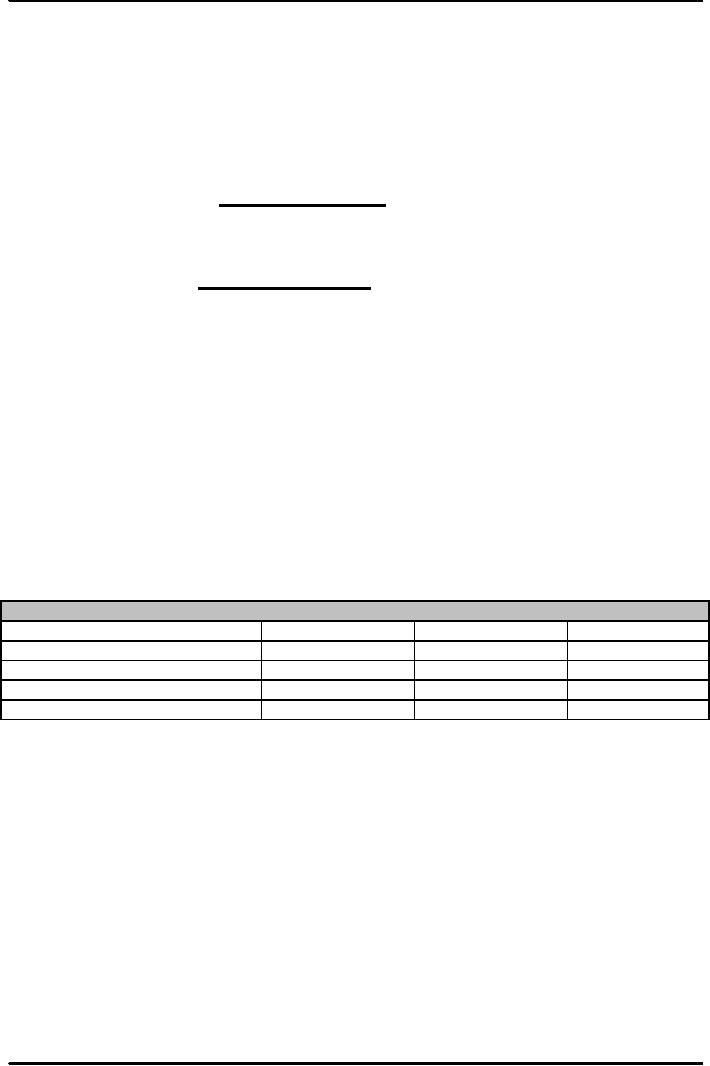 |
MONEY MULTIPLIER:The Quantity of Money (M) Depends on |
| << DEPOSIT CREATION IN A SINGLE BANK:Types of Reserves |
| TARGET FEDERAL FUNDS RATE AND OPEN MARKET OPERATION >> |

Money
& Banking MGT411
VU
Lesson
35
MONEY
MULTIPLIER
Remember, we
discussed that
Assuming
No
excess reserves are
held
There
are no changes in the amount of currency
held by the public,
The
change in deposits will be the inverse of
the required deposit reserve
ratio (rD)
times the
change
in required reserves, or ĆD =
(1/rD)
ĆRR
Alternatively
RR
= rDD
or ΔRR = rDΔD
For
every dollar increase in
reserves, deposits increase by 1/
rD
The
term (1/rD)
represents the simple deposit
expansion multiplier.
A
decrease in reserves will
generate a deposit contraction in a
multiple amount too
The
money multiplier shows how
the quantity of money (checking
account plus currency)
is
related
to the monetary base (reserves in the
banking system plus currency
held by the Nonbank
public)
Taking
m for money multiplier and MB
for monetary base, the
Quantity of Money, M is
M
= m x MB
(This
is why the MB is called High Powered
Money)
Consider
the following relationships
Money
= Currency + Checkable deposits
M=C+D
Monetary
Base = Currency +
Reserves
MB
= C +R
Reserves
= Req. Res. + Exc.
Res
R
= RR + ER
The
amount of excess reserves a bank
holds depends on the costs and
benefits of holding them,
The
cost is the interest foregone
The
benefit is the safety from having the
reserves in case there is an increase in
withdrawals
The
higher the interest rate, the lower
banks' excess reserves will
be; the greater the concern
over
possible deposit withdrawals, the higher
the excess reserves will
be.
Introducing
Excess Reserve Ratio
{ER/D}
R
= RR + ER
=
rDD
+ {ER/D} D
=
(rD +
{ER/D}) D
The
decision of how much
currency to hold depends on the
costs and benefits, where the cost
is
the
interest foregone and the benefit is the
lower risk and greater liquidity of
currency.
As
interest rates rise cash becomes
less desirable, but if the riskiness of
alternative holdings
rises
or liquidity falls, then it
becomes more desirable
Now
taking Currency Ratio as
{C/D}
MB
= C + R
110

Money
& Banking MGT411
VU
=
{C/D} D + (rD +
{ER/D}) D
=
({C/D} + rD +
{ER/D}) D
This
shows that monetary base
has three uses
Required
reserves
Excessive
reserves
Cash
in the hands of nonbank
public
Deposit
Expansion with Excess Reserves
and Cash Withdraws
1
D=
x
MB
{C/D}
+
rD
+
{ER/D}
{C /
D}
+1
M =
x
MB
{C/D}
+
rD
+
{ER/D}
The
Quantity of Money (M)
Depends on:
The
Monetary base (MB),
Controlled by the central
bank
Reserve
Requirements
Bank's
desired to hold excess
reserves
The
public's demand for
currency
The
quantity of money changes
directly with the base, and
for a given amount of the base,
an
increase
in either the reserve requirement or the
holdings of excess reserves
will decrease the
quantity
of money.
But
currency holdings affect
both the numerator and the denominator of the
multiplier, so the
effect
is not immediately obvious.
Logic tells us that an
increase in currency decreases
reserves
and
so decreases the money
supply.
Table:
Factors Affecting the Quantity of
Money
Factors
Who
controls it
Change
Impact
on M
Monetary
Base
Central
bank
Increase
Increase
Required
reserve-to-deposit ratio
Bank
regulators
Increase
Decrease
Excess
reserve-to-deposit ratio
Commercial
banks
Increase
Decrease
Currency-to-deposit
ratio
Nonbank
public
Increase
Decrease
The
Central Bank's Monetary
Policy Toolbox
Central
bank controls the quantity of
reserves that commercial banks
hold
Besides
the quantity of reserves, the central
bank can control either the
size of the monetary
base
or the price of its
components
The
two prices it concentrates on
are
Interest
rate at which banks borrow and
lend reserves overnight (the
federal funds rate)
Interest
rate at which banks can
borrow reserves from the
central bank (the discount
rate)
The
central bank has three
monetary policy tools, or
instruments:
The
target federal funds
rate,
The
discount rate, and
The
reserve requirement
The
Target Federal Funds Rate and Open
Market Operations
The
target federal funds rate is the
central bank's primary
policy instrument.
111

Money
& Banking MGT411
VU
The
federal funds rate is determined in the
market, rather than being
controlled by the central
bank.
The
name "federal funds" comes
from the fact that the funds
banks trade their deposit
balances
at
the federal reserves or central
bank.
Central
bank holds the capacity to
force the market federal
funds rate to equal the target rate
all
the
time by participating directly in the
market for overnight
reserves, both as a borrower and
as
a
lender.
As
a lender, the central bank
would need to make unsecured
loans to commercial banks, and as
a
borrower, the central bank
would in effect be paying interest on
excess reserves
The
central bank chooses to
control the federal funds rate by
manipulating the quantity of
reserves
through open market operations: the
central bank buys or sells securities to
add or drain
reserves
as required.
112
Table of Contents:
- TEXT AND REFERENCE MATERIAL & FIVE PARTS OF THE FINANCIAL SYSTEM
- FIVE CORE PRINCIPLES OF MONEY AND BANKING:Time has Value
- MONEY & THE PAYMENT SYSTEM:Distinctions among Money, Wealth, and Income
- OTHER FORMS OF PAYMENTS:Electronic Funds Transfer, E-money
- FINANCIAL INTERMEDIARIES:Indirect Finance, Financial and Economic Development
- FINANCIAL INSTRUMENTS & FINANCIAL MARKETS:Primarily Stores of Value
- FINANCIAL INSTITUTIONS:The structure of the financial industry
- TIME VALUE OF MONEY:Future Value, Present Value
- APPLICATION OF PRESENT VALUE CONCEPTS:Compound Annual Rates
- BOND PRICING & RISK:Valuing the Principal Payment, Risk
- MEASURING RISK:Variance, Standard Deviation, Value at Risk, Risk Aversion
- EVALUATING RISK:Deciding if a risk is worth taking, Sources of Risk
- BONDS & BONDS PRICING:Zero-Coupon Bonds, Fixed Payment Loans
- YIELD TO MATURIRY:Current Yield, Holding Period Returns
- SHIFTS IN EQUILIBRIUM IN THE BOND MARKET & RISK
- BONDS & SOURCES OF BOND RISK:Inflation Risk, Bond Ratings
- TAX EFFECT & TERM STRUCTURE OF INTEREST RATE:Expectations Hypothesis
- THE LIQUIDITY PREMIUM THEORY:Essential Characteristics of Common Stock
- VALUING STOCKS:Fundamental Value and the Dividend-Discount Model
- RISK AND VALUE OF STOCKS:The Theory of Efficient Markets
- ROLE OF FINANCIAL INTERMEDIARIES:Pooling Savings
- ROLE OF FINANCIAL INTERMEDIARIES (CONTINUED):Providing Liquidity
- BANKING:The Balance Sheet of Commercial Banks, Assets: Uses of Funds
- BALANCE SHEET OF COMMERCIAL BANKS:Bank Capital and Profitability
- BANK RISK:Liquidity Risk, Credit Risk, Interest-Rate Risk
- INTEREST RATE RISK:Trading Risk, Other Risks, The Globalization of Banking
- NON- DEPOSITORY INSTITUTIONS:Insurance Companies, Securities Firms
- SECURITIES FIRMS (Continued):Finance Companies, Banking Crisis
- THE GOVERNMENT SAFETY NET:Supervision and Examination
- THE GOVERNMENT'S BANK:The Bankers' Bank, Low, Stable Inflation
- LOW, STABLE INFLATION:High, Stable Real Growth
- MEETING THE CHALLENGE: CREATING A SUCCESSFUL CENTRAL BANK
- THE MONETARY BASE:Changing the Size and Composition of the Balance Sheet
- DEPOSIT CREATION IN A SINGLE BANK:Types of Reserves
- MONEY MULTIPLIER:The Quantity of Money (M) Depends on
- TARGET FEDERAL FUNDS RATE AND OPEN MARKET OPERATION
- WHY DO WE CARE ABOUT MONETARY AGGREGATES?The Facts about Velocity
- THE FACTS ABOUT VELOCITY:Money Growth + Velocity Growth = Inflation + Real Growth
- THE PORTFOLIO DEMAND FOR MONEY:Output and Inflation in the Long Run
- MONEY GROWTH, INFLATION, AND AGGREGATE DEMAND
- DERIVING THE MONETARY POLICY REACTION CURVE
- THE AGGREGATE DEMAND CURVE:Shifting the Aggregate Demand Curve
- THE AGGREGATE SUPPLY CURVE:Inflation Shocks
- EQUILIBRIUM AND THE DETERMINATION OF OUTPUT AND INFLATION
- SHIFTS IN POTENTIAL OUTPUT AND REAL BUSINESS CYCLE THEORY